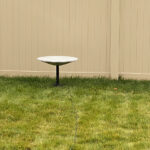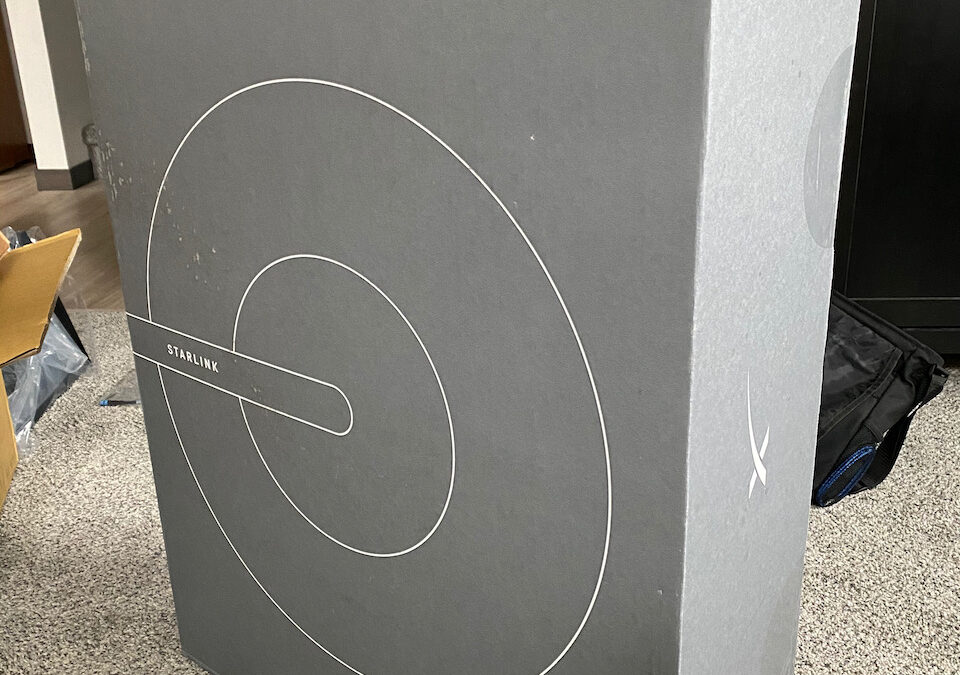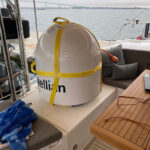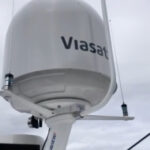Short Answer is: No, you can’t really use Starlink on a boat, yet!
But let’s talk about what it will take to get there and when you might expect it to be available.
Full disclosure: Sea-Tech Systems is a satellite services provider, we also have Starlink in use at our home office and are testing it, We have and do use(d), sell/sold, and/or support(ed) every other type of satellite service available to boaters including on our own boat while running Sea-Tech remotely from the Pacific Ocean. The information below is based on publicly available data from SpaceX and Elon Musk releases, combined with our own testing, conversations had with technical engineers at a variety of maritime satellite hardware manufacturers, and a working knowledge of satellite technology.
Starlink limitations for maritime use:
1.) Coverage:
While the satellites are orbiting globally, you still need a ground station in your vicinity (until they have widely deployed laser links, which they haven’t). The same exact satellite that your terminal can see in the sky must also be able to see a ground station at the same time, throughout its entire pass over your sky. If the satellite loses view of either your terminal OR the ground station, then your connection is lost until the terminal can find another satellite that can see both. Some of this is handled better with Starlink since they are providing known orbital data to the terminal so it can schedule switching and know where to look, but it’s still a big limiter as far as overall coverage. With low-altitude sats, the ground stations need to be quite close as well. Similar networks today include the not-widely-liked Globalstar.
2.) Regulatory:
Grounds stations or not, Starlink will need regulatory approval from each country to connect with terminals in that country. Major countries will likely come first, but it will take a while to get everywhere. Russia has already made it illegal to use. They will likely change that if they can get control of the ground stations for their users, something they did with Iridium.
3.) Let’s talk antennas:
For a boat, you will most likely need a 3-Axis stabilized parabolic dish antenna, like the existing Intellian, KVH, and Sailor domes used with VSAT services. Technically you can use a flat panel like Kymeta but those suck even though they are connecting to stationary satellites, and tracking a moving satellite from a moving platform using the phased array antenna is… difficult at best. In the end the maritime solution may very well be the same antennas as VSAT services use, just communicating with different satellites.
4.) Laser Links are necessary but expensive:
Laser links can help alleviate the need for ground stations but the laser link hardware itself currently costs 15X more than the entire satellite. So the costs to deliver out in the ocean will be exponential vs land with far fewer users to compensate for that cost. And, we will need to feather the laser birds in over time and deorbit the ones they replace until they have full coverage (about a 5 year timeframe to replace the entire constellation based on satellite lifespan and SpaceX Starlink FCC approvals.) Currently Iridium is the only satellite constellation that has deployed cross-links and they are not laser based.
5.) Maritime users won’t get subsidies:
There are government subsidies to cover residential (and especially rural residential) Internet services. So if you are anyone else, expect to pay MORE than a normal Starlink residential user.
6.) Terminals, when they are available, will be more expensive:
The current residential terminal costs about $2500-3000 to build and they sell at a loss for $500. And it is unable to handle even a small movement without resetting and re-establishing a connection. A maritime terminal with 3 Axis stabilization is unlikely to be any cheaper than today’s VSAT antennas, and could possibly be more expensive.
7.) Cost of spectrum for moving terminals is a factor:
It actually costs more (in Frequency spectrum usage/licensing) to for a satellite to deliver the same speeds to a moving terminal vs. a stationary terminal. And smaller terminals cost more than larger terminals. Part of the reason (not the only) you see Viasat (as one example) charging more for maritime Internet vs Residential/Business internet.
8.) Sum up…
While the initial residential service price of $99/month seems great, since there are no subsidies available for servicing maritime customers, laser link hardware is costly, and global maritime population needing satellite broadband is fewer than a single US city, expect the monthly fees to be higher.. Alot higher.

Starlink is really cool technology, and it generally works in a residential setting where they have coverage today. Starlink provides relatively low latency (lower than any other satellite network today) and high speeds (higher than most maritime satellite options today). But it’s far from a panacea for boaters even a few years out. It will get better, and it will eventually offer limited maritime service, and someday widespread maritime coverage, but don’t expect to go out and buy something in 2021 or even 2022 for your boat and have a good experience.
If you can wait a few years, then Starlink may be something you can use for your offshore adventures while working remotely at the same time. But if you need something now or even next year, you will need to look at one of the current alternatives.
Do you need satellite broadband on your boat now?
If you need maritime broadband to run your business from your boat, we can help! After helping define your needs, we can deliver unlimited broadband to boats today with several providers. We have multiple customers living aboard on boats as small as 43ft using satellite to host video calls for their business from the Atlantic Ocean, attending university via Zoom from remote atolls, and more, via cellular and Satellite. Sea-Tech Systems has partnerships with
Iridium,
Inmarsat,
Viasat,
Aura,
KVH, Intelsat, and more! We can help you figure out which solution best fits your needs! You can also shop all of our
communications packages here:
Get in touch with us to talk about what your needs are.




 Starlink is really cool technology, and it generally works in a residential setting where they have coverage today. Starlink provides relatively low latency (lower than any other satellite network today) and high speeds (higher than most maritime satellite options today). But it’s far from a panacea for boaters even a few years out. It will get better, and it will eventually offer limited maritime service, and someday widespread maritime coverage, but don’t expect to go out and buy something in 2021 or even 2022 for your boat and have a good experience.
Starlink is really cool technology, and it generally works in a residential setting where they have coverage today. Starlink provides relatively low latency (lower than any other satellite network today) and high speeds (higher than most maritime satellite options today). But it’s far from a panacea for boaters even a few years out. It will get better, and it will eventually offer limited maritime service, and someday widespread maritime coverage, but don’t expect to go out and buy something in 2021 or even 2022 for your boat and have a good experience.




